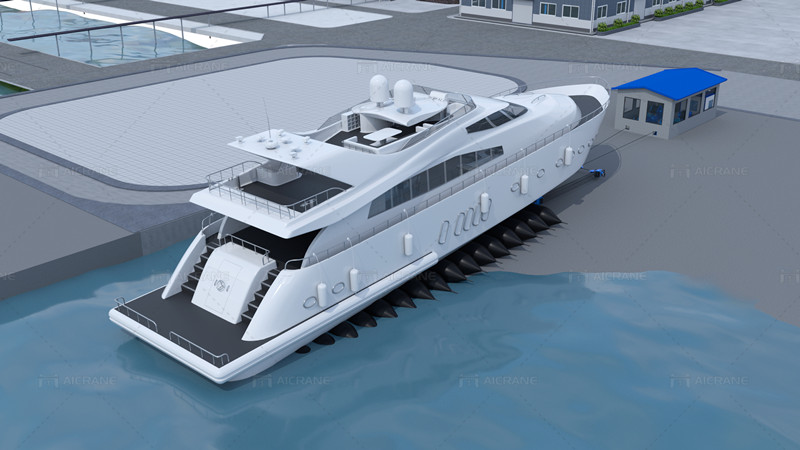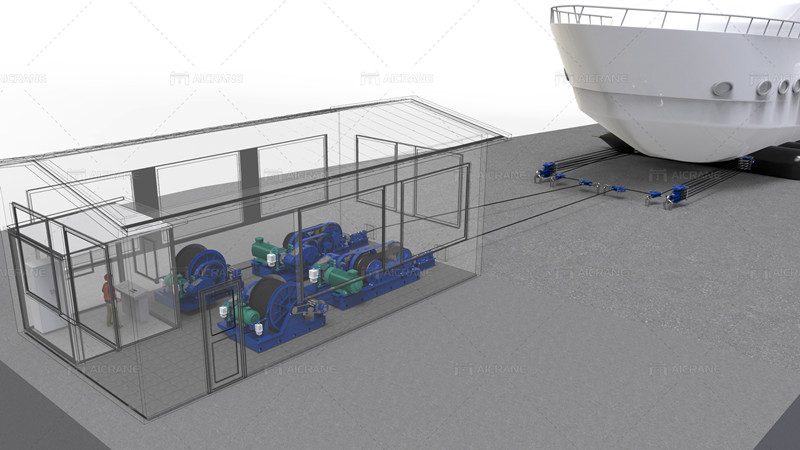Operating a slipway winch requires precision, attention to detail, and a good understanding of the equipment. Here’s a comprehensive guide on the right ways to operate a slipway winch:

Preparation
1. Safety First: Before any operation, ensure all safety measures are in place. This includes wearing appropriate personal protective equipment (PPE) such as helmets, gloves, and safety vests.
2. Equipment Check: Inspect the slipway winch, ropes, and other components for any signs of wear, tear, or damage. Ensure that all parts are in good working condition.
3. Clear Communication: Establish clear communication channels between the winch operator and the crew involved in the boat launching or retrieval process. This can be achieved through radios or hand signals.
Launching Process
1. Positioning the Boat: Ensure that the boat to be launched is properly positioned and secured on the slipway. The boat’s weight should be evenly distributed to prevent tilting during the launching process.
2. Secure the Winch Hook: Attach the winch hook to the designated attachment point on the boat. Ensure that it is securely fastened to avoid any accidental release during the operation.
3. Check Rope Tension: Before starting the winch, ensure that there is proper tension in the rope. This prevents slippage or jerking during the launching process.
4. Slow and Controlled Operation: Begin the winching process slowly and steadily. Avoid sudden jerks or rapid movements, as this can lead to accidents or damage to the equipment.
5. Monitor Boat Movement: Keep a close eye on the boat’s movement as it slides down the slipway. Adjust the winch speed accordingly to maintain a controlled descent.
6. Coordinate with Ground Crew: Maintain open communication with the ground crew to ensure they are prepared to receive the boat as it reaches the water.

Retrieval Process
1. Positioning the Boat: When retrieving a boat, position it in the water in a way that allows easy access for the slipway winch to attach.
2. Attach the Winch Hook: Securely attach the winch hook to the boat’s designated attachment point, ensuring a firm connection.
3. Maintain Controlled Tension: As with the launching process, maintain steady and controlled tension in the rope to prevent sudden movements or slippage.
4. Slow and Steady Retrieval: Begin the winching process slowly and steadily. Monitor the boat’s movement to ensure it is pulled up the slipway evenly.
5. Coordinate with Ground Crew: Communicate with the ground crew to ensure they are ready to receive the boat once it reaches the top of the slipway.
Post-Operation
1. Inspect Equipment: After the operation, conduct a thorough inspection of the slipway winch, ropes, and attachments. Slipway winch can be divided into single drum winch and double drum winch. If your winch has two drums, remember to check both of them. Any signs of wear or damage should be addressed immediately.
2. Proper Storage: If the winch is not in immediate use, ensure it is stored in a secure and dry location to prevent rust or damage.
3. Maintenance Schedule: Establish a regular maintenance schedule to keep the slipway winch in optimal condition. This includes lubrication, rope inspections, and component checks.
By following these guidelines, operators can ensure the safe and efficient operation of a slipway winch for boat launching and retrieval processes. Remember, safety should always be the top priority in any operation involving heavy equipment.